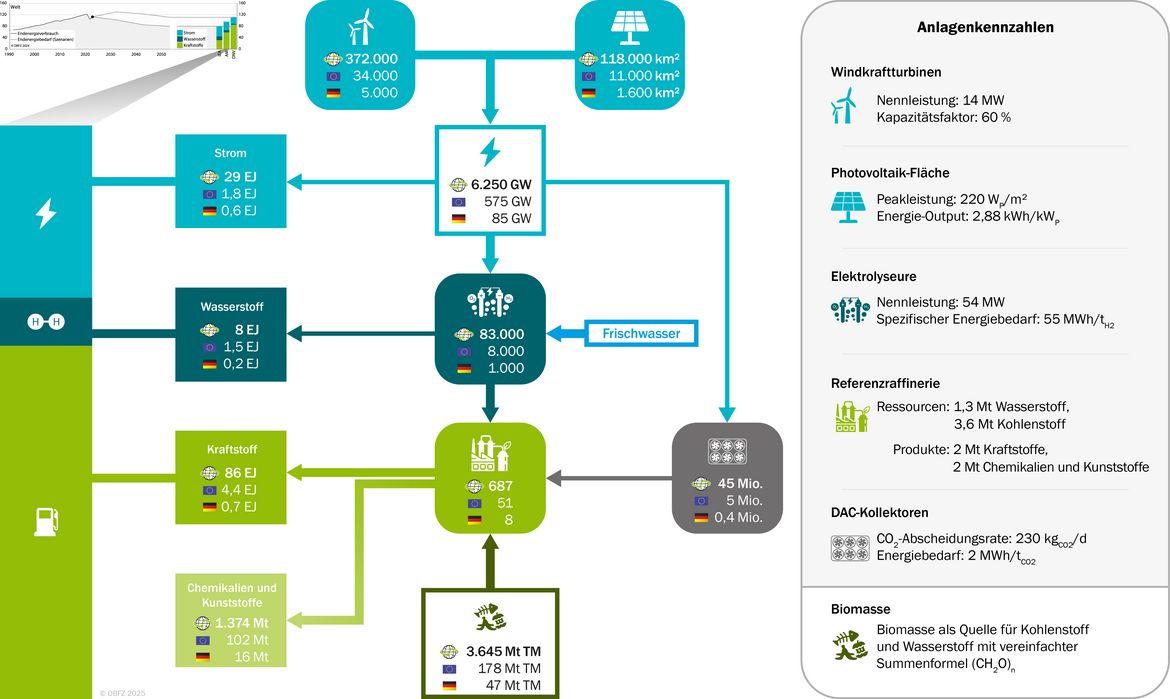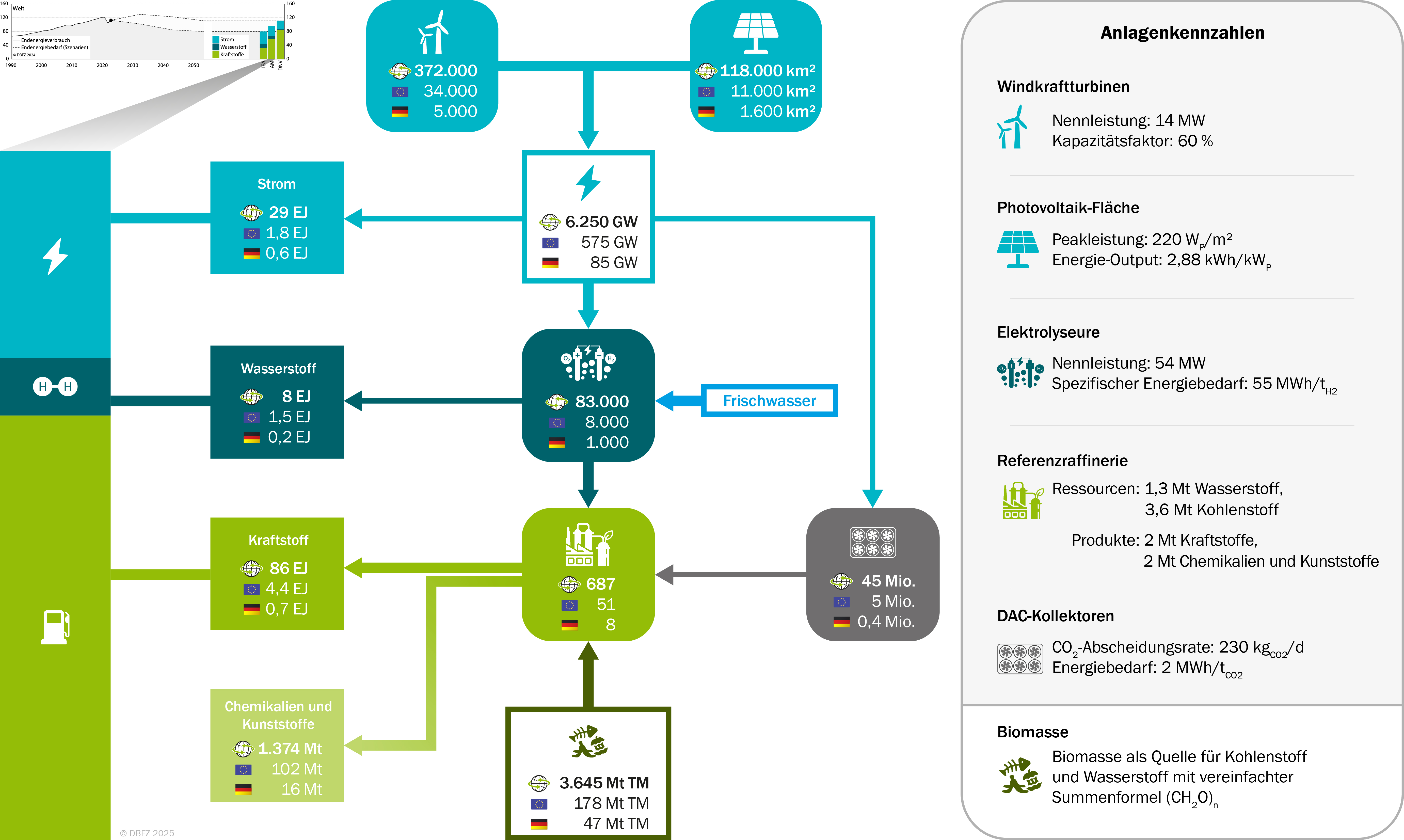Chapter 1: The Challenge of Energy System Transformation in Transport
In the chapter ‘The Challenge of Energy System Transformation in Transport’, the renewable energy requirements for greenhouse gas-neutral transport for Germany, the EU and the world are outlined and the associated technological effort is systematically determined from a technical perspective. Based on this abstract discussion basis, the sensitivity of the results of selected parameters is assessed and selected success factors for an energy system transformation are derived. The aim of this chapter is to highlight the gap between the status quo of renewable energies in transport and future energy demand, as well as the need for action.
For optimal presentation and readability, we recommend downloading and
opening the monitoring report in a PDF reader.
This section describes the technological requirements to illustrate the immense effort needed to provide renewable fuels (59EJ), electricity (29EJ) and hydrogen (8EJ) to meet future global transport energy demand. If the climate-neutral transport fuel demand calculated in this chapter is taken as the basis for future refinery requirements, almost 700 green reference refineries with a capacity of 2 million tonnes of fuels (gasoline, diesel and jet fuel) will be needed worldwide, including 51 reference refineries in the EU and 8 reference refineries in Germany. To supply these plants, a cumulative total of about 900 million tonnes of hydrogen and 2,500 million tonnes of carbon per year will be needed worldwide. The hydrogen and carbon will have to be supplied from biogenic and non-biogenic renewable sources.
In the baseline scenario presented, this corresponds to the mobilisation of over 3.5 billion t/a of biomass (DM) and the installation of 45 million DAC collectors to provide carbon dioxide, 83,000 water electrolysers for hydrogen, 372,000 wind turbines and 118,000 km² of PV area to provide electricity for direct use in electric vehicles and for the electricity-based energy carriers hydrogen and e-fuels by 2050.
Any other additional demand for energy sources has a directly proportional effect on the infrastructure required to produce e-fuels, as biomass is limited. In the example, an additional fuel demand of 10% of the total final energy demand (10% corresponds to 9.6 EJ) leads to an additional demand for more than 100 reference refineries (+16%). This results in additional demand for electrolysers (+20%), wind power plants, PV areas (both +20%) and DAC collectors (+40%) compared to the baseline.
(The assumptions made can be found in the monitoring report).
© DBFZ 2025, Quelle: Schröder, J.; Görsch, K.; Lenz, C. N. (2025): Herausforderung Energiewende im Verkehr. Abbildung 1-3
Recommended citation for the chapter: Schröder, J.; Görsch, K.; Lenz, C. N. (2025): Herausforderung Energiewende im Verkehr. In: Schröder, J.; Görsch, K. (Hrsg.) (2025). Erneuerbare Energien im Verkehr: Monitoringbericht. Leipzig: DBFZ. 205 S. ISBN: 978-3-949807-23-7. DOI: 10.48480/w11j-9w27 S. 5–21.

